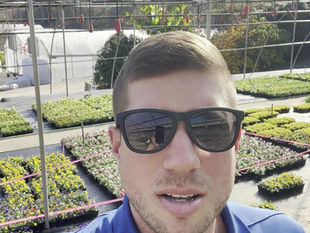

The Most Crucial Step in Building an Outdoor Kitchen: Starting with the Right Foundation
0
20
0
When it comes to building a beautiful and functional outdoor kitchen, most homeowners get excited about the finish—granite countertops, high-end grills, stainless steel appliances, and sleek stone finishes. While all of those elements are important, there’s one step that is absolutely crucial to the long-term success and functionality of your outdoor kitchen: the concrete footer and utility placement.
At Hannah Outdoor Designs, we’ve seen how cutting corners in the early stages of a build can lead to costly issues down the road. That’s why we always emphasize this key step to our clients.
Why the Concrete Footer Matters
The concrete footer is the structural foundation of your outdoor kitchen. Without it, your kitchen components—especially heavy items like grills, countertops, and appliances—can shift, crack, or sink over time. This is especially true in Georgia’s climate, where soil movement and erosion can compromise a weak or improperly poured base.
A proper concrete footer:
Supports the weight of the entire kitchen structure
Prevents settling and cracking
Ensures your kitchen remains level and secure for years to come
Helps maintain the integrity of any stone or paver finishes
Failing to pour a proper footer can lead to uneven surfaces, safety hazards, and expensive repairs.
Getting Utilities in the Right Place—The First Time
An outdoor kitchen needs more than just a good-looking design. It also needs properly positioned water, sewer, gas, and electrical lines. Planning these utilities early—before the concrete is poured—is critical.
Here’s why:
Water & Sewer: Sinks, ice makers, and beverage stations require access to clean water and proper drainage. If these aren’t placed accurately before the footer is poured, you may end up tearing up your base to reroute lines later.
Electrical: Outlets for lighting, appliances, and entertainment systems (like TVs or sound systems) need to be precisely placed to ensure functionality and safety.
Gas: If you’re including a built-in grill, pizza oven, or fire feature, proper gas line placement is essential for both performance and compliance with local codes.
Getting these elements right at the start prevents headaches later in the project—and ensures everything works seamlessly once your kitchen is complete.
Work With a Contractor Who Understands the Process
The most common mistakes we see in outdoor kitchen installations come from skipping this planning phase or rushing through it. That’s why we handle all aspects of this process—from concrete and grading to utility placement—before we ever talk about finishes.
We work closely with plumbers, electricians, and inspectors to make sure everything is positioned correctly, permitted where necessary, and installed to last.







